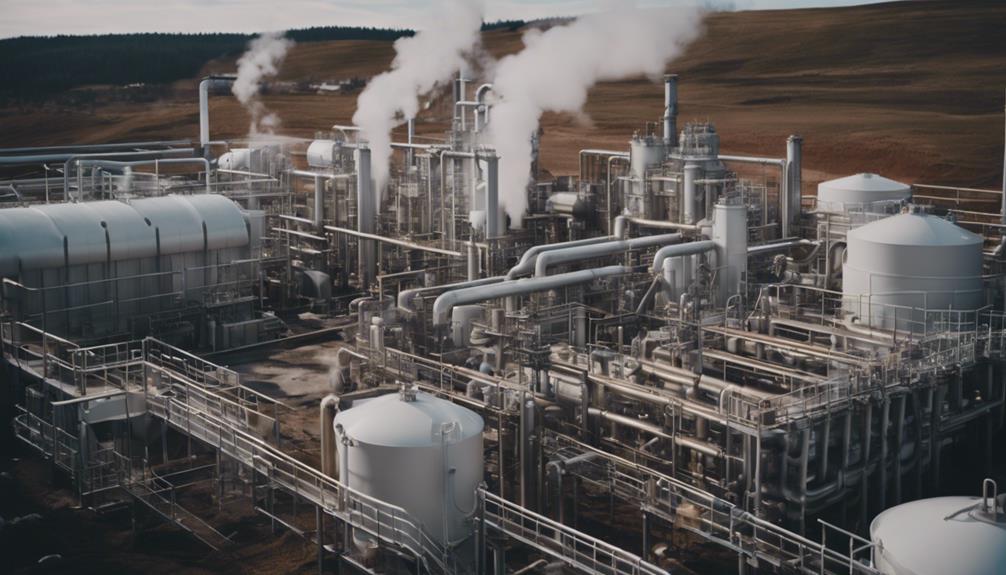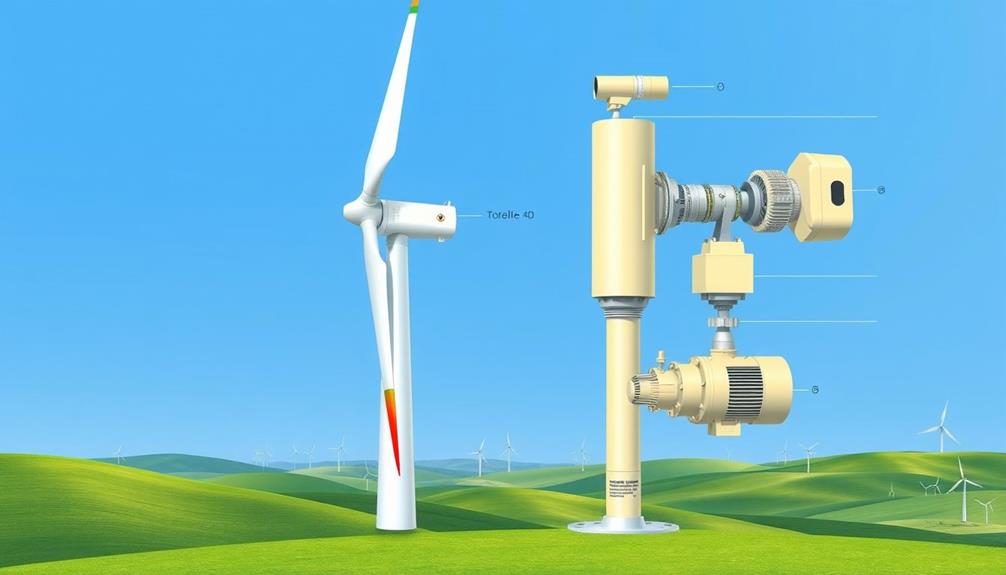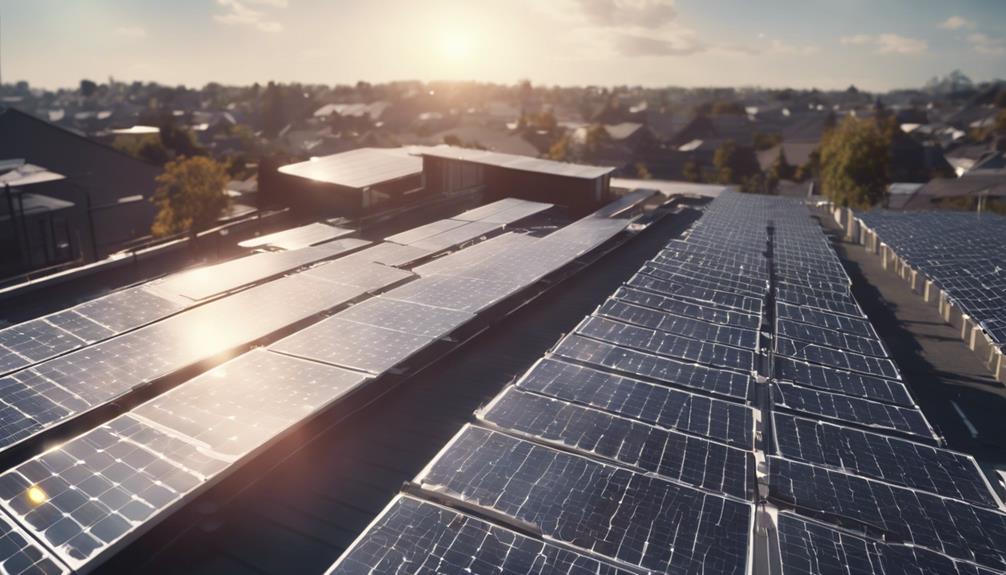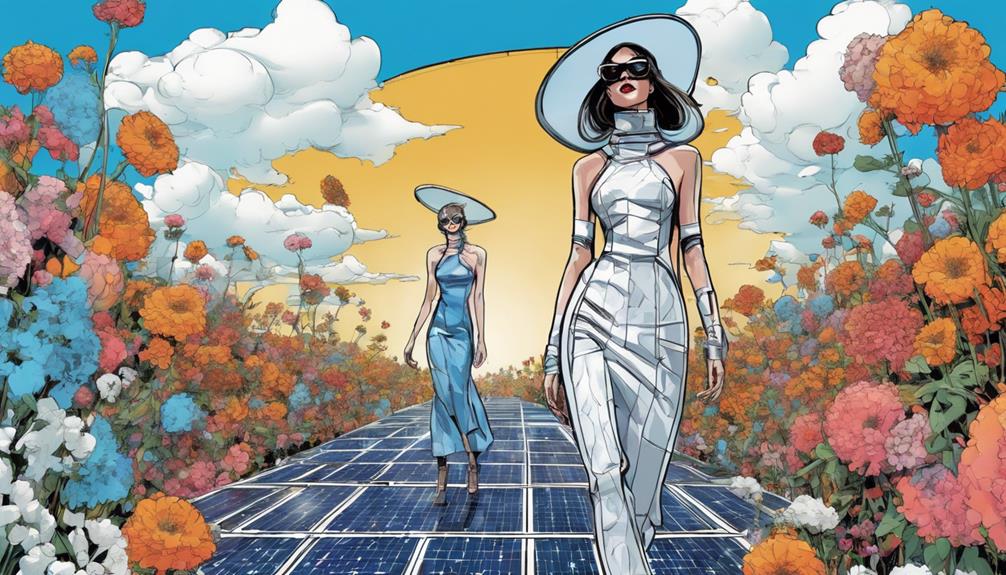When considering the costs of a geothermal energy plant, be prepared for significant financial commitments, totaling tens of millions of dollars. The initial investment can reach up to $5 million per megawatt, with construction expenses being high due to drilling complexities and specialized equipment. Careful planning is essential to navigate the risks of overcrowding wells, impacting long-term viability. Understanding the complexities and significant expenses involved in harnessing geothermal energy is necessary for successful implementation.
Key Takeaways
- Initial investment can reach $5 million per MW.
- Construction costs amount to tens of millions.
- Substantial financial commitments are required.
- Costs can run into tens of millions due to drilling complexities.
- Risk of well overcrowding poses financial risks.
Geothermal Power Plant Construction Costs
When constructing a geothermal power plant, costs can escalate to as much as $5 million per megawatt. Geothermal energy is an attractive renewable energy source, but the initial investment in building geothermal power plants can be substantial.
The construction costs associated with geothermal power plants are a significant consideration for developers and investors. These costs can amount to tens of millions of dollars due to the complexities involved in drilling operations and the required specialized equipment.
The intricate nature of drilling for geothermal reservoirs, along with the need for advanced technology, contributes to the high construction expenses. Additionally, the risk of overcrowding wells poses a threat to the long-term viability and investment in geothermal plants.
Understanding and carefully managing the construction costs of geothermal power plants is vital for ensuring the success and sustainability of these renewable energy projects.
Geological Audits and Feasibility Assessments

Before starting on the construction of a geothermal energy plant, you must prioritize geological audits to evaluate the subsurface conditions thoroughly. These assessments are vital in determining the feasibility and potential of harnessing geothermal resources in your selected location.
Geological Audit Importance
Geological audits play a vital role in evaluating the feasibility of constructing a geothermal energy plant by analyzing the site's geological characteristics. These assessments are necessary in determining if the location has the required heat and water resources essential for the plant's operation.
By conducting detailed geological audits, risks can be minimized, and the efficiency of the geothermal plant can be optimized. Understanding the geological makeup of the site helps in selecting the most appropriate location for the plant, ensuring smooth construction and operation.
Additionally, these audits provide essential information that can prevent unexpected challenges during the implementation phase. Investing time and resources in thorough geological assessments is fundamental for the success of a geothermal energy project.
Feasibility Assessment Necessity
Conducting thorough feasibility evaluations is essential for evaluating the viability of constructing a geothermal energy plant. Before initiating geothermal plant construction, geological audits and feasibility evaluations play a vital role in determining the project's success. These evaluations delve into the geological characteristics of the site, analyzing factors such as temperature gradients, fluid flow, and rock formations. By examining these aspects, experts can determine the feasibility of drilling wells for geothermal energy extraction.
To emphasize the significance of feasibility evaluations in geothermal plant development, consider the following table:
| Significance of Feasibility Evaluations |
|---|
| Analyzes Geological Characteristics |
| Determines Drilling Well Viability |
| Examines Temperature Gradients |
| Assesses Economic Viability |
| Reduces Risks in Construction |
Geological audits and feasibility evaluations pave the way for informed decision-making, helping to mitigate uncertainties and risks associated with geothermal energy projects. By investing time and resources in these evaluations, developers can increase the chances of a successful and sustainable geothermal plant construction.
Risk of Well Overcrowding

Improper handling of geothermal wells can lead to the risk of overcrowding, impacting plant effectiveness and long-term viability. Geothermal energy capacity relies on the strategic placement of wells within systems to maintain sustainable energy production.
Well overcrowding poses a significant risk, potentially reducing effectiveness and causing resource depletion. Inadequate well spacing can result in diminished heat extraction, leading to lower overall plant efficiency. To mitigate the risk of well overcrowding, strategic planning and continuous monitoring are essential to maintain peak plant performance.
Proper well management is vital for preventing overcrowding and sustaining long-term geothermal energy production. Ensuring efficient well spacing is essential to maximizing the extraction of heat from the earth's core and optimizing the overall performance of geothermal power plants.
Financial Commitment for Power Companies

Investing in geothermal power plants requires power companies to make substantial financial commitments, impacting their budgets and long-term planning. Constructing a geothermal power plant involves high construction costs, including drilling expenses, equipment costs, and infrastructure requirements. The costs can vary but are generally significant, with expenses potentially reaching up to $5 million per MW of power generated. Power companies must carefully ponder the financial commitment needed for geothermal energy plants as these investments can run into tens of millions of dollars. Additionally, there is no guarantee that the wells won't become overcrowded, adding an element of risk to the financial commitment. Below is a table summarizing the key financial aspects power companies need to take into account when investing in geothermal power plants:
| Aspect | Description |
|---|---|
| Construction Costs | Can be tens of millions, including drilling expenses |
| Infrastructure Requirements | Substantial investments needed for plant setup |
| Financial Commitment | Significant financial outlay required for development |
| Power Generation Cost | Expenses can reach up to $5 million per MW |
| Risk of Overcrowding | Wells may become overcrowded, adding financial risk |
Complex Geological Audit Requirements

When evaluating the complex geological requirements for a geothermal energy plant, you must carefully consider the audit complexity and its impact on costs. Understanding the intricacies of the geological audit process is vital for making informed decisions about site selection and project feasibility.
Audit Complexity Considerations
During the construction of a geothermal energy plant, steering the complex geological audit requirements is crucial for evaluating the site's suitability. To ensure successful plant performance, consider the following audit complexity considerations:
- Thorough Geological Audits: Conduct extensive surveys to understand underground conditions and identify potential thermal resources accurately.
- Subsurface Structure Analysis: Explore detailed assessments of rock formations and fault lines to optimize heat extraction efficiency.
- Evaluation of Thermal Gradients: Examine thermal variances in the subsurface to determine the most suitable locations for plant development.
- Risk Mitigation Strategies: Implement measures based on audit findings to mitigate geological risks and enhance the long-term viability of the geothermal energy plant.
Cost Impact Analysis
To understand the financial implications of complex geological audit requirements in geothermal energy plant construction, evaluating the cost impact is essential. Geological audits play a vital role in determining the feasibility and potential of geothermal resources in a specific location. These studies directly influence the overall cost estimation and design of geothermal plants, impacting resource utilization and total expenses significantly.
To provide a clearer picture, let's break down the key cost factors influenced by geological audits in geothermal plant construction:
| Cost Factor | Description | Impact |
|---|---|---|
| Resource Assessment | Evaluating geothermal potential in the area | Determines plant viability |
| Well Placement | Based on subsurface geology findings | Affects efficiency and output |
| Design Optimization | Tailoring plant design to geological conditions | Minimizes risks and enhances performance |
Uncertainty in Well Overcrowding

How can the uncertainty surrounding well overcrowding impact the efficiency and sustainability of geothermal energy plants? Well, here are four key points to keep in mind:
- Decreased Efficiency: Overcrowded wells can lead to a reduction in the efficiency of geothermal power plants, affecting their overall performance.
- Environmental Impacts: Well overcrowding can have detrimental environmental effects, such as increased pressure on geothermal reservoirs and potential risks to surrounding ecosystems.
- Complex Development: The uncertainty of well overcrowding adds complexity to the development process of geothermal energy plants, requiring additional resources for planning and management.
- Sustainability Concerns: Mitigating the risk of well overcrowding is important for the long-term sustainability of geothermal energy plants, ensuring their effectiveness and viability over time.
Addressing the challenges posed by well overcrowding is essential to maximizing the benefits of geothermal energy while minimizing potential drawbacks.
Tens of Millions in Construction Costs

Geothermal power plants often incur construction costs amounting to tens of millions of dollars due to the intricate requirements of geological audits and drilling. These expenses can soar up to $5 million per megawatt of installed capacity.
The substantial construction costs associated with geothermal energy plants make them a significant financial commitment for power companies. Despite the high initial expenses, there's no assurance that geothermal wells won't become overcrowded over time, leading to additional maintenance and operational costs.
Building a geothermal power plant demands careful financial planning and long-term investment strategies to manage the overall substantial expenses involved. The intricate nature of these projects necessitates a keen eye on costs, ensuring that the construction expenses align with the expected return on investment in the geothermal energy sector.
Significant Financial Commitment

Investing in geothermal energy plants demands power companies to make a significant and long-term financial commitment due to the high construction costs involved. Here's why:
- High Construction Costs: Geothermal energy plants can cost up to $5 million per megawatt to build, necessitating a substantial upfront investment.
- Complex Drilling Requirements: Constructing these plants involves intricate drilling processes, contributing to the overall construction expenses.
- Essential Infrastructure Development: Substantial funds are required for infrastructure development to support the efficient operation of geothermal plants.
- Long-Term Financial Commitment: Power companies must be prepared for ongoing financial commitments to maintain and optimize the plant's performance over its operational lifespan.
Navigating the financial landscape of geothermal energy plants demands careful planning and a readiness for a prolonged financial engagement to guarantee the successful establishment and operation of these sustainable energy sources.
Frequently Asked Questions
What Is the Running Cost of Geothermal Energy?
When you consider geothermal energy, the running cost is advantageous. Maintenance and repairs form the bulk of expenses. The use of Earth's heat keeps fuel costs low. Variability exists based on size and location.
Why Are Geothermal Plants so Expensive?
Geothermal plants are expensive due to high upfront drilling costs, complex geological audits, potential well overcrowding, and construction expenses. Total investments often exceed tens of millions of dollars, making these projects financially challenging.
How Long Does It Take for Geothermal to Pay for Itself?
Imagine this: Geothermal energy plants are like magic money trees! They can pay for themselves in just 5-7 years. That's right, with the right factors in play, you'll be reaping those financial benefits in no time.
Are Geothermal Plants Profitable?
Geothermal plants can be profitable. Once set up, operating costs are low. Investors can expect to recover 17-18% annually. With improved efficiency, costs can drop to 4-9 cents per kilowatt-hour.
What are the costs associated with harnessing geothermal energy?
The costs associated with harnessing geothermal energy technology can vary depending on the specific project and location. Initial investment in equipment, drilling, and infrastructure can be significant. However, the long-term operational costs are relatively low, making it a cost-effective and sustainable energy source in the long run.
Conclusion
To sum up, the costs of a geothermal energy plant can be substantial. From geological audits to construction expenses, power companies face a significant financial commitment.
With the risk of well overcrowding and complex audit requirements, the investment required is tens of millions. Despite the challenges, the potential for sustainable energy production makes it a worthwhile endeavor.










